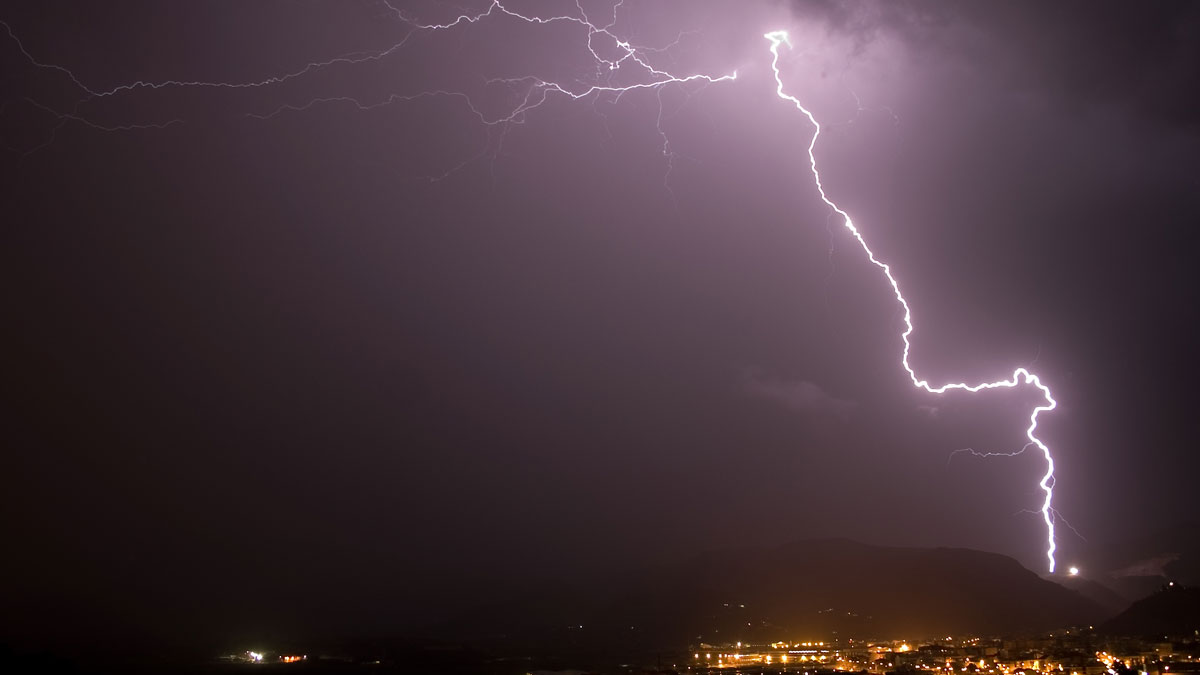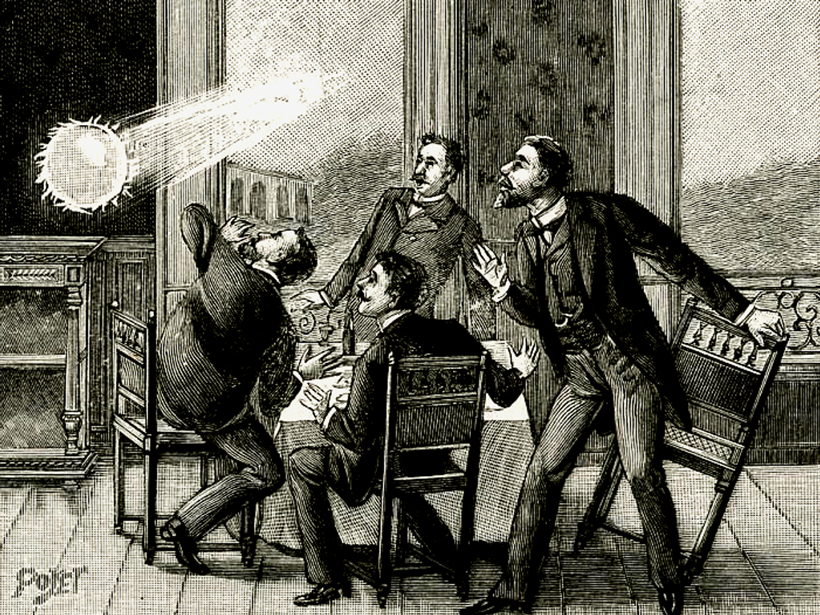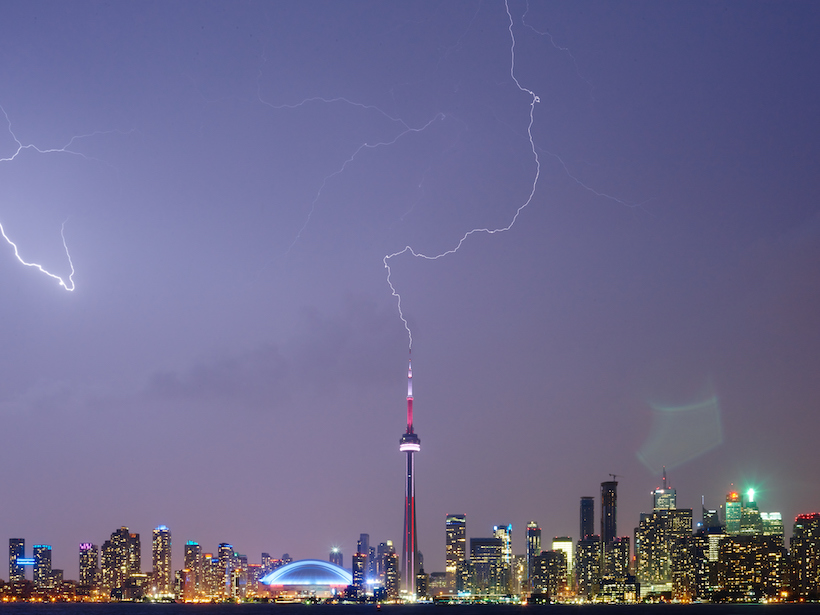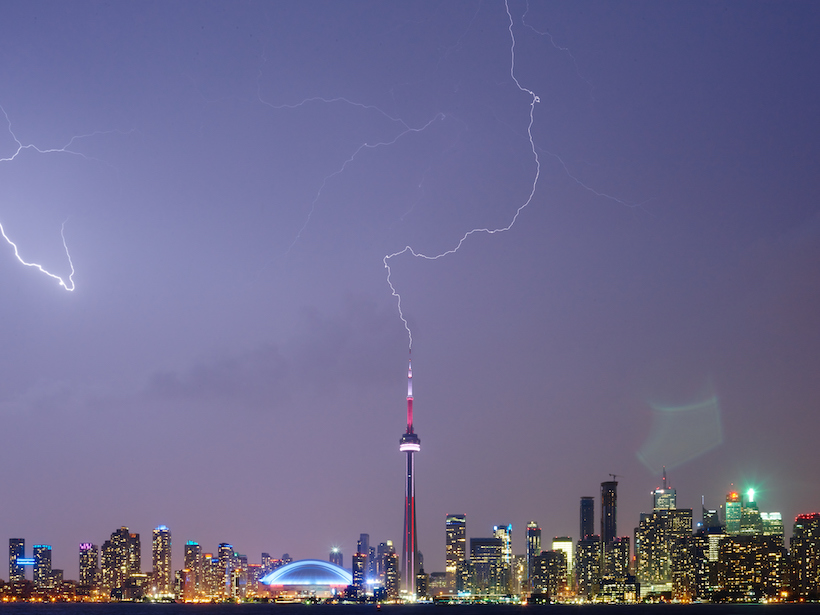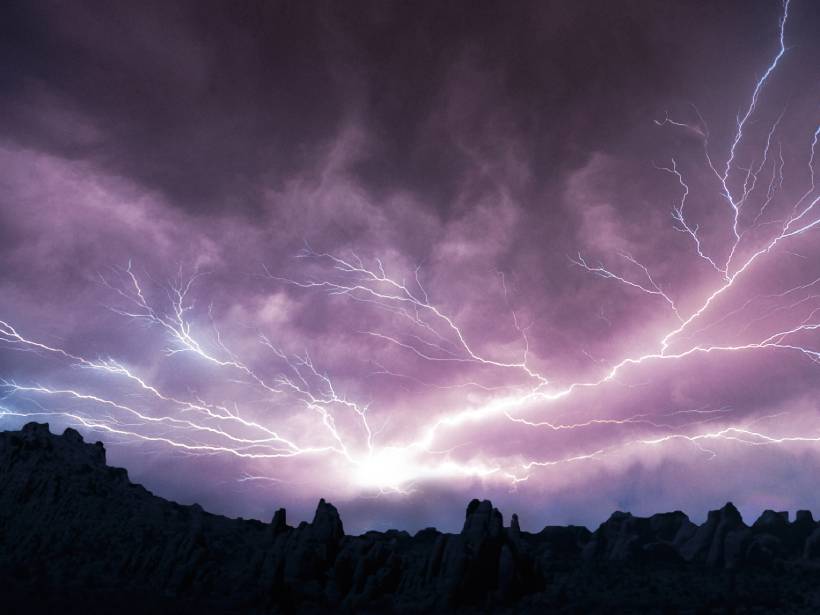Lightning could have sparked the beginnings of life, but the primordial atmosphere might have made it more difficult for lightning to initiate.
lightning
Cleaner Pandemic Air Led to Reduced Lightning Strikes Worldwide
As people stayed home during the COVID-19 lockdowns, air quality improved. But the improvement was accompanied by an unusual meteorological side effect: a decrease in lightning.
Lightning Tames Typhoon Intensity Forecasting
Typhoons regularly drench densely populated western Pacific regions, but lightning could forecast intensity more than a day before a storm’s strength peaks.
Have You Seen Ball Lightning? Scientists Want to Know About It
Reports of ghostly spheres of light are often too qualitative. These scientists want your detailed accounts.
Observations from Space and Ground Reveal Clues About Lightning
In a coordinated monitoring effort, scientists have uncovered the timing and triggering of high-energy lightning events in the sky.
Cloud-to-Ground Lightning May Have Struck a Key Ingredient for Life
On early Earth, rock created by lightning strikes to the ground likely held a form of phosphorus necessary for prebiotic chemistry.
Upward Lightning Takes Its Cue from Nearby Lightning Events
Lightning in a thunderstorm changes the electromagnetic field in a way that sparks upward lightning from tall structures.
Rare Wintertime Thunderstorms Recorded over the U.S. Gulf Coast
“Thundersnow”—thunderstorm activity accompanying a winter storm—was spotted near southern Texas earlier this year.
Arctic Lightning Up 300% in One 11-Year Study
The increase may be due to climate change, researchers suggest, but the trend hasn’t been observed in other lightning data sets.


